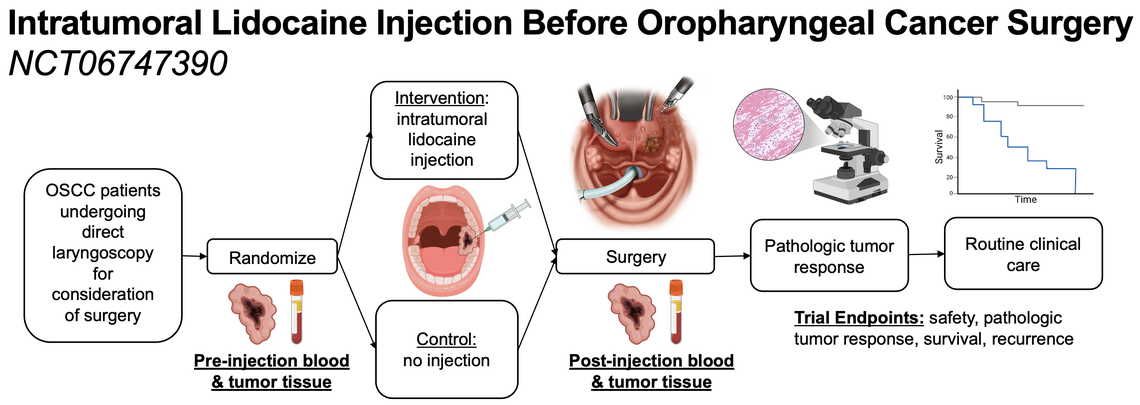Research
Head and Neck Cancers
Head and neck cancers are the sixth most common type of cancer, resulting in tens of thousands of deaths each year. Our lab is dedicated to addressing this challenge by developing novel diagnostic and therapeutic strategies aimed at improving patient outcomes.
We focus on understanding how changes in cellular signaling pathways and metabolism drive tumor development, progression, and metastasis. By unraveling the biological mechanisms behind these processes, we aim to discover therapies that can favorably alter tumor behavior and the host response to cancer. Our lab utilizes advanced technologies, such as cutting-edge microscopy techniques, alongside expertise in biochemistry, cell biology, and translational models, to gain a comprehensive understanding of head and neck cancer biology.
Our clinical and translational research builds on the discoveries made in our lab, aiming to quickly transform scientific discoveries into patient care, with the ultimate goal of improving survival and quality of life for those facing these challenging cancers.
Taste Receptor Signaling in Cancer
Our team is at the forefront of studying taste receptor signaling pathways in the context of malignancy and immunity. Our research has revealed that sweet, umami, and bitter taste receptors are expressed in nearly 50 different solid tumors and are linked to patient survival outcomes. In head and neck cancers, bitter taste receptors, or T2Rs, are involved in cancer proliferation and respond to bitter agonists, including drugs or compounds present in the tumor microenvironment. We also discovered that the bitter taste receptor T2R14 can be activated by lidocaine to induce apoptosis. Notably, T2R14 expression levels are associated with HPV-positive tumors, the most common type of oropharyngeal cancer in the United States.
Head and Neck Cancer Microbiome
We explore how the microbiome and microbial imbalances in head and neck cancer interact with T2Rs, influencing cancer outcomes, metastasis, and treatment responses. Our lab demonstrated that T2Rs expressed on head and neck cancer cells are activated by quorum sensing molecules secreted by bacteria, leading to calcium-mediated mitochondrial depolarization, caspase activation, and apoptosis. We have also investigated differences in the microbiome of patients with head and neck cancer and potential links to disease progression.
Metabolic Regulation and Apoptosis in Head and Neck Cancer
Our lab actively investigates how metabolic alterations, including inhibition of glycolysis and glucose transport, can induce cell death in head and neck cancer. For instance, we found that inhibiting the glucose transporter GLUT1 not only reduces glucose uptake and triggers apoptosis in head and neck cancer cells but also enhances the effects of T2R agonists. This suggests a promising new treatment strategy that leverages cancer cell metabolism to induce cell death.
Clinical Trials and Translational Research
We are deeply involved in translating laboratory findings into clinical applications. Our investigator-initiated clinical trials include studies using bitter agonists like lidocaine for treating HPV-associated head and neck cancers. We strive to ensure our therapies are safely and effectively integrated into clinical practice, with the goal of offering new hope to patients with head and neck cancers.
We are actively enrolling patients in our clinical trial “A Phase I Randomized Controlled Trial of Intratumoral Lidocaine Injection Before Transoral Robotic Surgery (TORS) and Neck Dissection for HPV-Associated Oropharyngeal Squamous Cell Carcinoma.” NCT06747390. More information is available at: https://clinicaltrials.gov/study/NCT06747390.
Collaborative Research and Mentorship
Collaboration and mentorship are central to our mission of driving scientific discovery. Our team works closely with researchers across departments and institutions, and we take pride in mentoring students and residents, helping to shape the next generation of scientists and clinicians.


